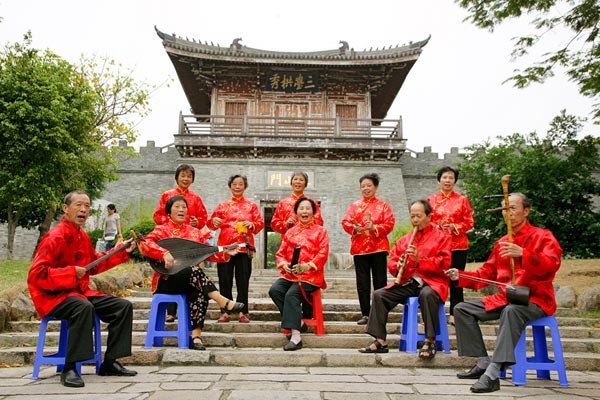 |
|
Local performers entertain visitors with free performances of Nanyin music, a 1,000-year-old traditional opera sung in southern Fujian dialect. Chen Yingjie/For China Daily
|
A hall displaying religious steles carved to pay tribute to the deceased foreign merchants and missionaries reflects Quanzhou's status as a "World Museum of Religions", as named by UNESCO.
One can find a delicate cultural fusion in the collection, which contains 138 Islamic pieces, 133 Hindu, 44 Christian and one Manichean. While some gravestones mix Chinese, Persian and Arabic language, several Christian tombstones bear interesting images of angels resembling Apsaras - female cloud and water spirits from Buddhist mythology.
Not far from the maritime museum is the majestic Qingjing Mosque, another admirable example of Quanzhou's tolerance of the world's religions.
Also known as the Ashab Mosque, it was built to resemble a mosque in Damascus, Syria, in 1009, and it is one of the oldest Arab-style mosques in China.
The 20-meter-high arched gate made of green granite looks quite exotic as its domes are carved with lotus and Arabic scriptures.
Islamic preachers followed Arabic trade contacts to Quanzhou as early as the Tang Dynasty (AD 618-907), and the Ashab Mosque's worshipping hall later became the center of Islamic worship in the region.
Although the hall's large dome collapsed during an earthquake, the open-air, spacious and grassy field dotted with gigantic pillars still evokes an awe-inspiring sense of solemnity under the clear sky.
